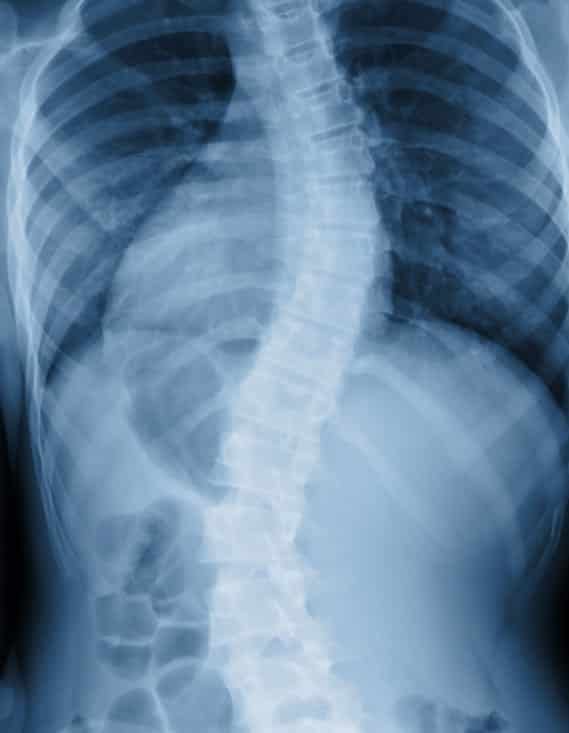Scoliosis in children and teens - what to look for
Scoliosis – What is it?
Scoliosis is defined as a sideways bending of the spine greater than 10 degrees, accompanied by vertebral rotation. This means that the spine has a “left/right” bend that may look like an “S” or “C” shaped curve. Once the angle of that bend (measured on X-ray) gets to 10 degrees we call it a scoliosis.
It is often first noticed in childhood and adolescence, particularly during the rapid spinal growth period around the same time as puberty (11-14 years of age). It can lead to spinal deformity, pain (although in children and adolescents it is rarely painful), and spinal degeneration.
Scoliosis is more common in girls than boys and 2-4% of the population are thought to have a scoliosis, with 10% of these requiring intervention (bracing or surgery). 85% of cases of scoliosis are idiopathic (no clear understanding of an underlying cause). Idiopathic scoliosis also has a tendency to run in families. Occasionally a scoliosis does have a more serious underlying cause and this is why it is very important to have scoliosis assessed by a health professional with good understanding of scoliosis.
What to look for in your child
Image source: Raising Children Network
Signs that your child may have a scoliosis and should be screened by a health professional include:
· Uneven shoulder height
· Uneven looking shoulder blades
· Asymmetrical (uneven) waist creases
· Asymmetrical rib cage obvious when they bend forward
· noticeable “C” or “S” shape of the spine when you look from behind.
Periods of growth in a child’s life are times when a curve may progress. Early detection and accurate monitoring of a curve is important to ensure that your child gets the best possible care at the right time.
Treatment of Scoliosis
Scoliosis in children should be monitored closely by a health professional. The frequency of monitoring depends on the stage of skeletal maturity of your child. We will monitor more closely during times of growth. As a general rule, curves until 20 degrees may be monitored and managed conservatively, curves over 20 degrees may require bracing and for very large curves (over 50 degrees), surgery may be recommended.
There is no evidence that any non-surgical treatment can reduce curves greater than 60 degrees.
There are a few different bracing options available depending on the degree of curve. The object of bracing is to slow down the progression of a scoliosis and in some cases reduce the degree of the curve.
Surgery is done to stop the progression of a severe scoliosis and potentially help prevent complications that can be associated with a severe scoliosis such as compression of organs, and nerves and blood vessels.
In summary - the earlier a curve is picked up, the better chance we may have of slowing the progression of the curve using conservative measures like bracing and hopefully avoiding surgery.
If you notice any of the areas of asymmetry/unevenness, or changes in posture in your child, please don’t hesitate to contact the clinic for an assessment by one of our qualified clinicians or click here to book.



